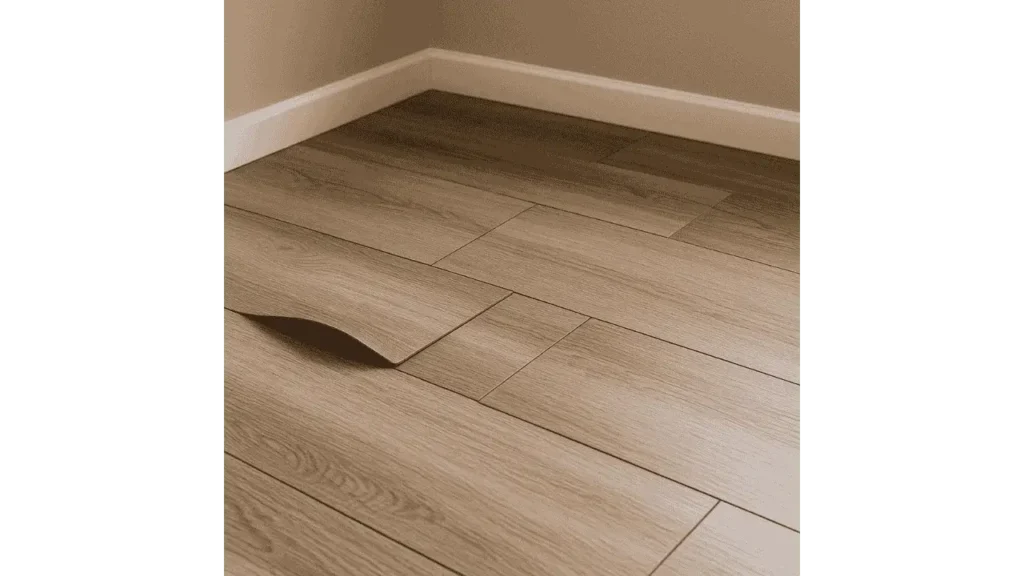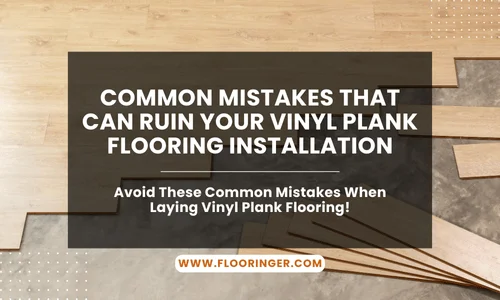Installing vinyl plank flooring can completely transform your space when it’s done right. But even small oversights during installation can lead to uneven surfaces, visible gaps, or planks that just won’t stay put. I’ve seen homeowners make the same errors time and again, not because they’re careless, but because no one warned them. Here are the most common mistakes I’ve come across, so you can avoid them and enjoy a smooth, professional-looking floor from the start.

Forgetting to Sink Fasteners
Raised Spots That Ruin Smoothness
When fasteners aren’t properly sunk into the subfloor, they create small bumps that throw off the flat surface your planks need. These raised areas can lead to visible unevenness and affect the plank’s fit and finish. Ensuring all fasteners are fully flush is one of those small but critical steps that make all the difference.
Leaving Baseboards Installed
Creating Gaps and Blocking Expansion
Many people skip the step of removing baseboards, thinking it’ll save time. But baseboards that remain in place restrict the natural expansion of vinyl planks and often create visible gaps. Removing them first and reinstalling them afterward gives the flooring room to breathe and results in a much cleaner edge.
Ignoring the Subfloor Level
The Foundation Behind Every Flaw
An uneven subfloor is one of the quickest ways to ruin your vinyl installation. You’ll end up with planks that shift, crack, or don’t stay locked. Taking the time to fill dips and sand high spots makes for a much more secure and lasting result.
“Leveling the subfloor is the single most overlooked step, but it’s also the one that prevents most call-backs,” says Mason Hargrove, a licensed flooring contractor based in Oregon.
Skipping Door Jamb Undercuts
Visible Gaps at Entry Points
Undercutting the door trim lets planks slide beneath for a seamless look. When this step is skipped, installers end up with odd cuts and gaps around doors that break the illusion of a continuous floor. It’s a detail that might take a few extra minutes, but it dramatically improves the finish.
Ending Rows with Tiny Planks
Weak Joints and Distracting Layouts
If the last board in a row is too short, it can compromise the structural integrity of the floor. Visually, it also looks choppy. Pre-planning the layout helps you avoid this and results in stronger seams and a more balanced design across the room.
Overthinking the Tools
You Don’t Need a Toolbox Full of Gadgets
Contrary to popular belief, you don’t need expensive or specialized equipment to install vinyl plank flooring. A utility knife, tape measure, and a tapping block are often all you need. Overcomplicating the process usually just slows things down.
Not Planning for Corners
Awkward Fitting in Tight Spots
Corners can get tricky if they’re not planned out early. When ignored, they often lead to jagged edges or pieces that don’t quite line up. Measuring carefully and dry fitting in these areas saves a lot of frustration later.
Repeating the Same Plank Pattern
A Floor That Looks Too Fake
Vinyl flooring is designed to mimic real wood, but repeating the same pattern too closely defeats the purpose. Always stagger plank designs and mix them up for a more natural, hardwood-like appearance.
“I tell clients to lay out a few planks first and step back. If it looks repetitive now, it’ll look even worse when finished,” says Tanya Ellis, an interior designer who specializes in custom flooring design.
Placing Vents Over Seams
Weak Points That Invite Damage
Air vents positioned directly over seams create natural stress points. Over time, they may split or shift. Instead, plan plank placement to avoid seams lining up beneath vent openings whenever possible.
Ignoring Manufacturer Guidelines
Risking Warranty and Structural Issues
Every vinyl plank product is a little different. Skipping the manufacturer’s instructions might not just lead to poor results; it could void your warranty. It’s always worth the extra few minutes to check and follow their advice.
Takeaways
If there’s one thing I’ve learned working with homeowners, it’s that the little things make the biggest difference. It’s not just about laying planks down; it’s about how well you prepare, how closely you pay attention, and how willing you are to do it right the first time. Vinyl flooring can absolutely look beautiful and last for years, but only if you take your time with the basics. Don’t skip steps, don’t rush the planning, and don’t assume tools or shortcuts will make up for proper prep. The floor you walk on every day deserves that level of care, and you’ll feel the difference under your feet.
